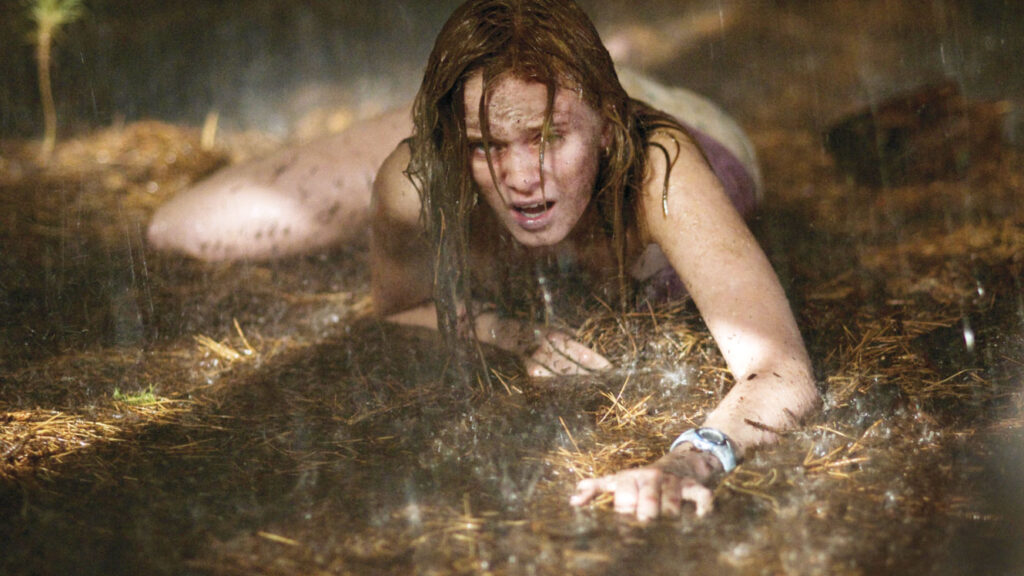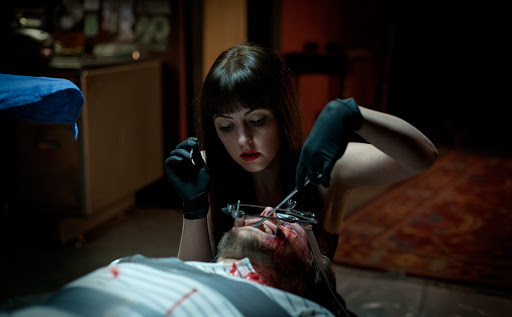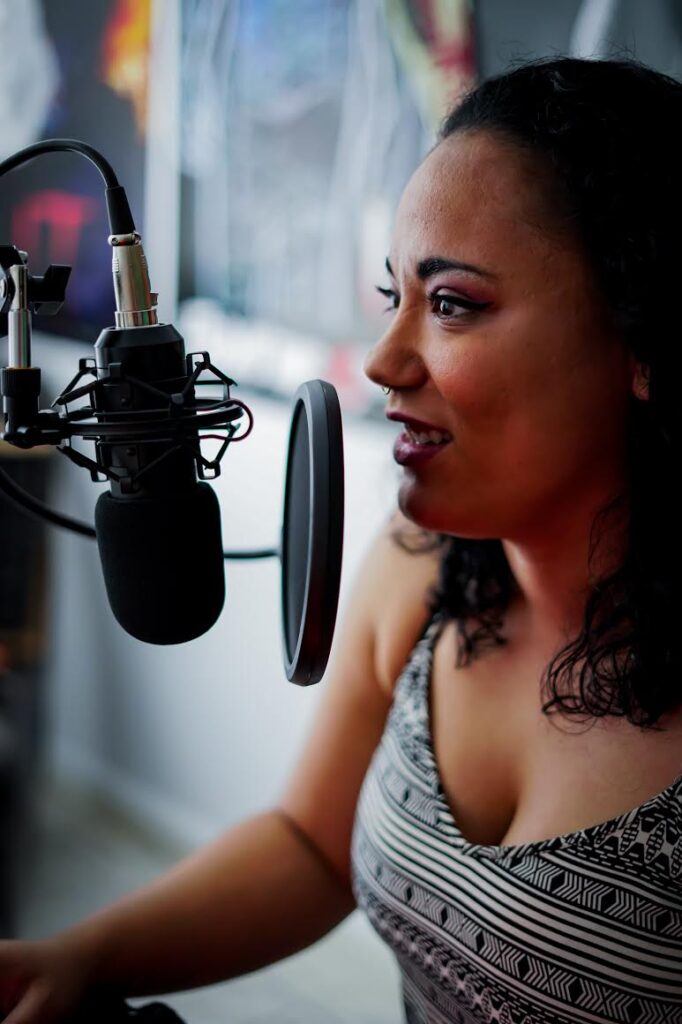
30 Oct 150 Films Too Many: Rape Revenge Horror is as Exhausted as Womxn Are
BY GABE CASTRO
Horror is a genre that has had a duplicitous relationship with most marginalized groups, including womxn. As the home of the blonde victim trope, a character that could never pass the sexy lamp test, let alone the Bechdel test and the Final Girl trope, the horror genre allows viewers to feel both seen and misrepresented in the same film. The horror genre is one that has, far more than others, featured women in leading roles. This presence of women at the forefront of our fears is a double-edged sword. These women fighting for their lives to make it to the end of the film unfortunately exist to be harmed, tormented and tortured for viewer’s pleasure. Films like American Mary, the appropriately named Revenge, I Spit on Your Grave and numerous others replicate the same traumatic and glorified violence that minimizes their protagonists to victims instead of the badass women they’ve always been. How can a genre that seeks to reveal, confront and conquer our shared fears continuously let down women and fail to produce original, empowering content?

The Rape-Revenge trope is a classic narrative used in horror cinema. Historically, when a woman is raped in a horror film, a loved one seeks revenge on her behalf. In films like Last House on the Left, women are brutalized on screen, their pain put on display so that the audience can sympathize with them and root for their avengers. In recent years, the sub-genre of horror has taken a turn towards a more feminist-friendly trend. Women no longer need to be avenged by a male character but instead, can find the power to avenge themselves. We now see women not just simply surviving until the end, but actively fighting back and doling out punishment. This new spin can feel like a step in the right direction. How can we not feel empowered by women fighting back against their abusers?
The problem lies in the repetitive nature of these films in the horror genre. According to the site allhorror.com, there are 150+ Revenge Horror films. It feels as if the genre has settled on this answer, declaring it enough of an effort for positive representation. This continuous use of sexual abuse of women tires out womxn horror lovers, myself included. These films spin the narrative that womxn can only gain strength through violent and graphic sexual abuse. This narrative claims that they are only able to fight back, find motivation for evil, or be worthy of sympathy because of this experience. Womxn have always been strong and we are more than potential victims of sexual abuse. We are fully capable of being evil all on our own (a motivational statement I never thought I’d make). To use sexual abuse and the act of vengeance as a catalyst for empowerment or change is diminutive. It shows us that womxn are only ever going to be the result of acts done upon us, specifically acts by men.
The horror world, like much of Hollywood, is still a male-centric creative space. So much so that in 2020 we can get excited about a film brilliant in premise that seeks to explore the toxicity of abusive relationships, only to be completely let down by the execution. The Invisible Man is a film I was beyond eager to watch, as I was captivated by the re-envisioned tale of a lurking menace. The story follows Cecilia as she adjusts to her life after escaping an abusive and controlling partner, who just so happens to be a tech-genius who’s created a suit that renders him invisible. The Invisible Man sets out to show the audience what it feels like to leave an abusive relationship, to never feel truly free of their presence as it looms around every corner. I had high hopes for this film, and in the beginning, it delivered phenomenal cinematography. The camera acts as the Invisible Man, lurking in rooms just out of the way of our protagonist and remaining in spaces long after the characters have left. The audience becomes the monster, watching Cecilia struggle and slowly unravel. Large rooms feel constricted and claustrophobic when we know there’s a possibility that he’s in there. Act one was profound and honest. Elizabeth Moss demands empathy, often portraying women in distress in an authentic and powerful way. Her character proclaims, “He always does this! Makes me out to be the crazy one,” vocalizing the terror and frustration of anyone who’s been gaslit in a toxic relationship.
However, the second act of this film undoes any progress, with an ending that leaves Moss’ character vengeful, conniving and murderous. If this film’s idea is to empower womxn or folx who have suffered from relationship abuse, then it fails them. It does so by wielding the premise of pain and acting out a fantasy that many, if not most, of those who have suffered from abuse could never achieve. How many women are currently imprisoned because they fought back against an abuser? According to the ACLU, “More than 1 million women are currently incarcerated or otherwise under the control of the justice system in the U.S. Many incarcerated women—nearly 60% of female state prisoners nation-wide and as many as 94% of certain female prison populations—have a history of physical or sexual abuse.” Cyntoia Brown comes to mind: a woman who was convicted of murder for killing the person who raped her at just 14 years old. She was only just released after 15 years of incarceration. In the world of horror, wouldn’t Cyntoia be our hero, enacting vengeance upon those who brought her harm? And yet, in reality, women can find no solace in a tale of retribution and instead find themselves incarcerated. Relying on these stories diminishes the characters to victims that were only ever going to be abused. That’s their whole existence. It’s a weapon so easily armed against women that it’s used in 150+ horror films. It’s an uninspired answer to a traumatic experience. Though abuse is haunting and stays forever, these experiences do not turn womxn into monsters.

It’s not all male directors’ fault either. Revenge is directed by Coralie Fargeat and was an instant cult-classic. American Mary, written and directed by the Soska Sisters, is a film ripe with body positivity and female empowerment. It is a story about a young woman using her plastic surgery training to help those in the world of underground body modification. Mary helps these womxn realize their true identities, by transforming their outside appearance to reflect the beings they are inside. It’s inspiring, and despite the grunge and gore associated with underground plastic surgery, it’s still a fun film. However, viewers are quickly let down by a long, drawn out rape scene. The film follows Mary as she uses these skills, torturing and morphing the man who did this to her into a monster; just as her many other clients request, he now reflects who he is inside. Mary is powerful, talented and kind-hearted. She’s down on her luck and struggling even before the incident. We don’t need narratives that paint women as perfect, pure beings corrupted by this same, humiliating and tired scenario. Women can be corrupted in more ways than that. I have no doubt Mary would have found her newfound superpower of transformation through body modification as a helpful tool to fight back against the patriarchy without that incident. Honestly, interacting with the sweet character of Beatrice or “Betty Boop” and hearing about her struggles could’ve been enough inspiration to use her powers for evil.
More importantly, if you’re going to put your characters through these traumas and tribulations, we need better endings. Murder and revenge are not the only answer. It does no justice to the women incarcerated for enacting such retribution. What we need are more films like It Follows. Brendan Morrow of Bloody Disgusting, in their article, “‘It Follows’ is Not About STDs. It’s About Life As a Sexual Assault Survivor” says,
“It Follows is an anti-victim blaming masterpiece that gives a huge middle finger to the genre’s antiquated approach to sex. It’s about a girl who, through absolutely no fault of her own, has her body violated. The world she’s subjected to in the aftermath is complete hell, and there are no easy solutions. Her life has been forever changed, and non-victims will never truly get what that’s like. Such is life as a survivor of rape, and the fact that we live in a judgmental society that is so quick to blame the victim doesn’t make it any easier.”
It Follows is a film about a monster, which can take the form of any person, who continually walks towards you at a steady pace. It will catch up to you eventually, no matter how far you run. The people around you can’t tell you to look behind you as the monster approaches because they can’t see it. Not unless they too have experienced this trauma. Ultimately, it is a film about survival. It is about the effects of trauma after having been manipulated and harmed by someone you trusted. The trauma haunts us, but it does not make us monsters. The film shows us the strength in being vulnerable and of simply living with your trauma. We keep walking forward, no matter what is lurking behind us. It is horror that creeps, insidiously into our bones and stays there. It is horror that gives our protagonist more credit and strength than many of our final girls have ever received.
We don’t need more Revenge horror films. As horror lovers and womxn, I feel we are owed more authentic, empowering stories that show that womxn are capable of being evil without this violence enacted upon us. Or, that we can endure trauma and acts of violence without becoming monsters. I want to see us be motivated by more. I want to see our strength in survival as much as we see strength in revenge. We have already begun moving forward with the shift to making womxn the avengers and shouldn’t settle here. Keep the momentum going and give us refreshing, new takes in the genre. I think it’s safe to say that 150 is more than enough.

Gabe Castro is a Philadelphia-based multi-media creator specializing in the horror genre. By day, she works in public access television helping her community make people-powered media. By night, she is the producer and co-host of the horror media analysis podcast, Ghouls Next Door. She and fellow Ghoul, Kat, explore the unique and raw way society and culture influence film and media. Gabe believes media can be used as a tool to bring social change and works in all she does to create impactful and inspiring media. Gabe is also a co-host of the Black Tribbles, the award-winning geek talk radio show where she spends time with fellow BIPOC nerds. When she’s not hosting podcasts, she directs short horror comedies and designs terrifying soundscapes for the Black Women are Scary Podcast that celebrates people of color writing in horror.

Sorry, the comment form is closed at this time.